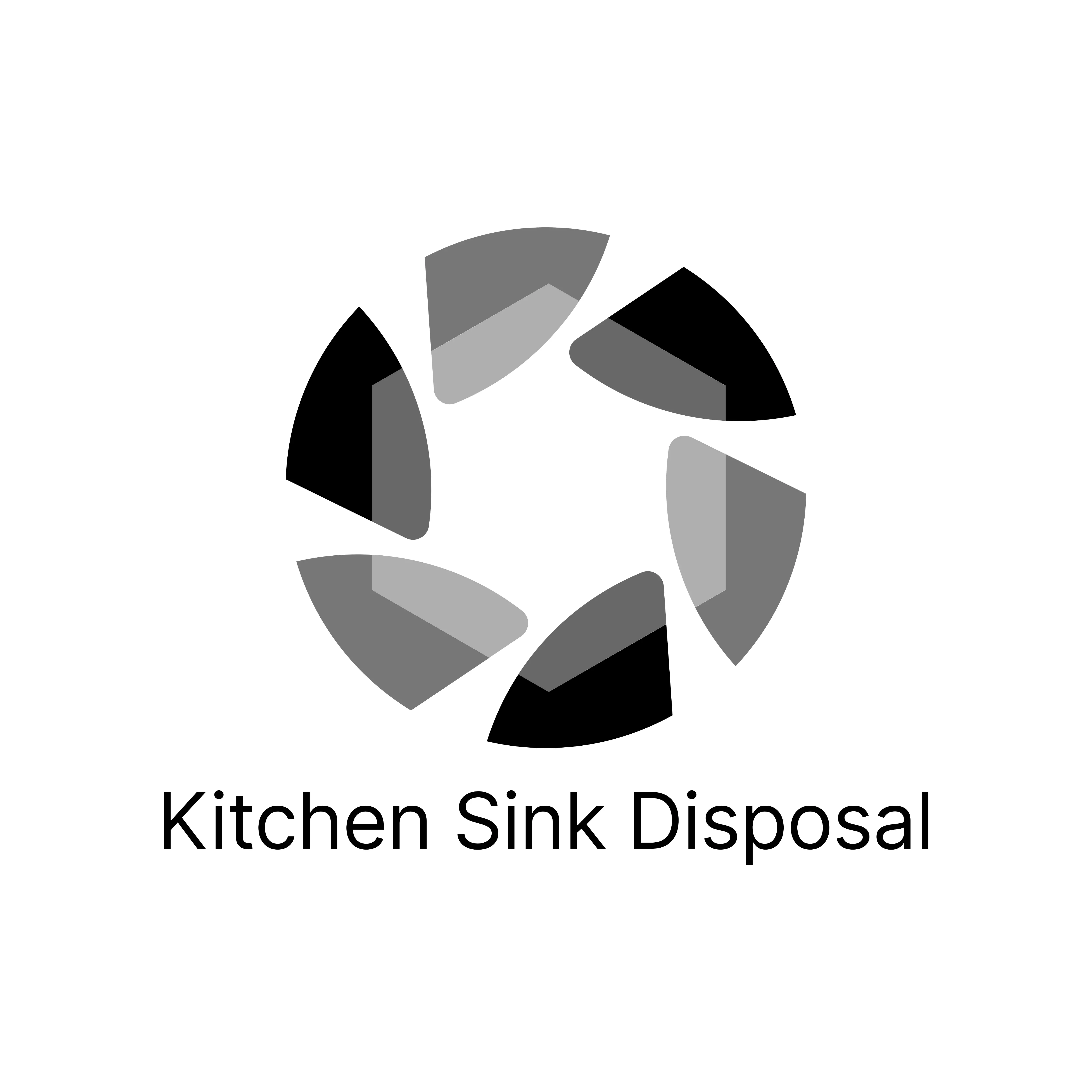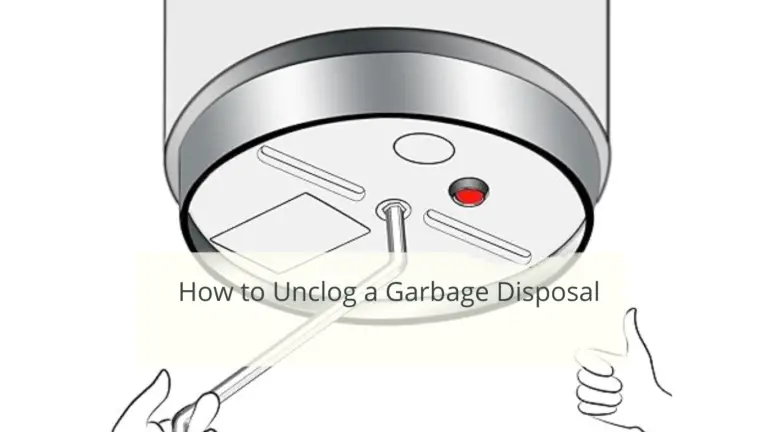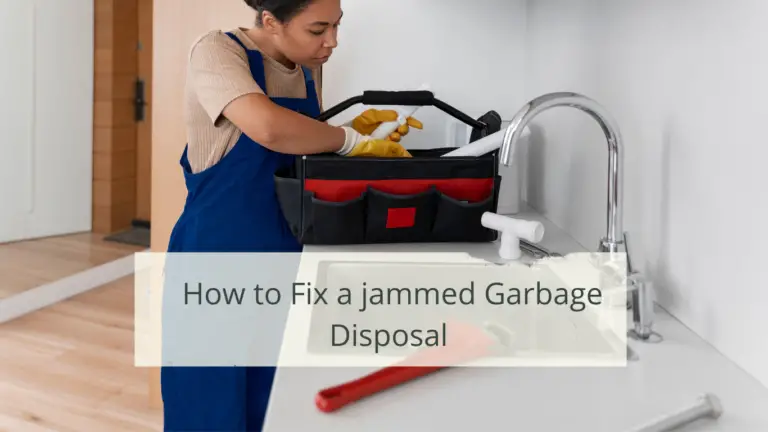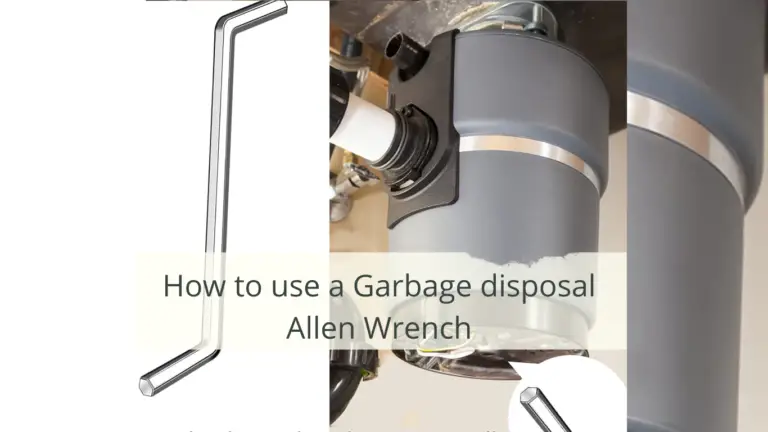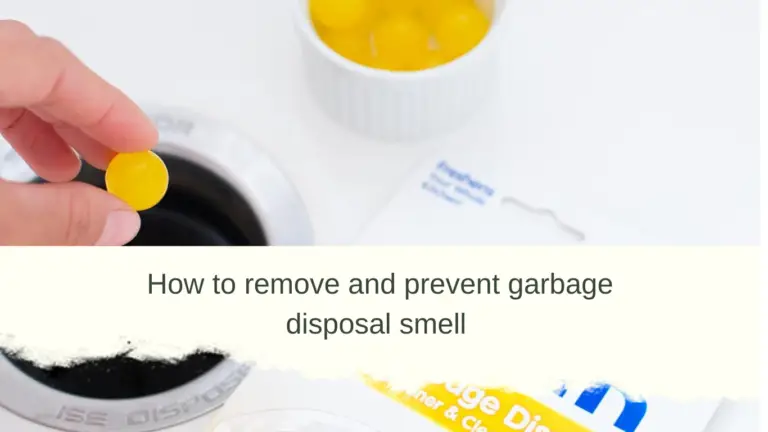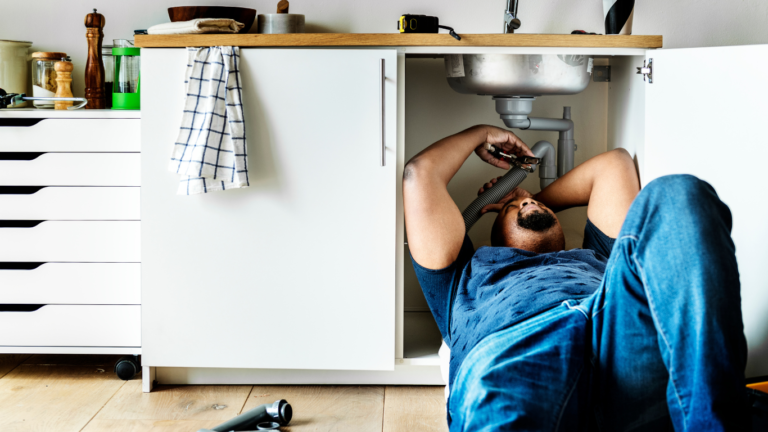How to install dishwasher air gap to a garbage disposal
This post may contain affiliate links which means I may receive a commission for purchases made through links.
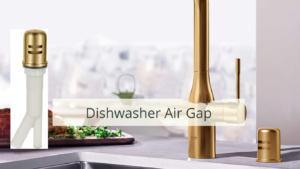
Having both a dishwasher and garbage disposal in your kitchen offers exceptional convenience. However, there are some precautions you should take when combining these appliances. Otherwise, the backflow from the drain hose and contaminants from the kitchen sink will flow back into the dishwasher.
As a result, you’ll find brown, murky water and dirty dishes in your dishwasher, instead of leaving you with clean dishes. You don’t want that, do you? Well, it’s about time you consider installing a dishwasher air gap to your garbage disposal then!
But what exactly is a dishwasher air gap? How does it work? Do I have one for my dishwasher? Those are some of the questions I’ll be answering in this article. In addition, I’ll show you how to install a dishwasher air gap in a garbage disposal.
Without further ado, let’s get right into it!
What is a dishwasher air gap?
A dishwasher air gap is a fitting that is attached to the garbage disposal or directly to the kitchen sink. More notably, it features a small outlet located a few inches above the kitchen sink and 2 hoses underneath. One hose connects to the garbage disposal, while the other connects to the dishwasher. This increases the gap’ or vertical disposal between the garbage disposal and dishwasher, hence preventing any backflow from a garbage disposal from entering a dishwasher.
In essence, the air gap separates the hose running wastewater from the dishwasher and the hose running to the drain. This ensures that both pipes never intersect, eliminating the risk of dirty water contaminating the dishwasher and its content. In short, an airflow is simply a safe and efficient way of ensuring that backflow never gets into the dishwasher.
How does a dishwasher air gap work?
Generally, a dishwasher air gap has 2 branches of hose with a physical ‘gap of air’. One branch of the hose goes downward from the air gap to the garbage disposal, while the other branch runs upward to connect the dishwasher to the air gap.
The head of the air gap, which has a vertical air gap with holes, is then installed above the countertop, while both branches remain underneath the counter. If there is any backflow from your garbage disposal, these holes will serve as the escape route for the wastewater, preventing it from entering a dishwasher.
Now that you know the various components of an air gap and how they’re connected, here’s how the fitting work;
Typically, the wastewater leaving the dishwasher goes into the hose running upward to the air gap, and pours down through the air gap into the 2nd tube. From there, the wastewater continues its way downward into a garbage disposal or directly into the drain. However, if there is any blockage in the garbage disposal or plumbing system, the wastewater will come out through the air gap instead of going back into the dishwasher.
Do I need a dishwasher air gap?
Many plumbing codes across the USA require all dishwasher installations to include a dishwasher air gap. For instance, it’s mandatory to install an air gap for residential projects in states like Minnesota, Washington, Hawaii, and California. So, if you live in an area that has adopted a dishwasher air gap installation as a mandatory plumbing procedure, you’ll certainly need one for your dishwasher.
In addition to ensuring that you meet the proper plumbing code, installing an air gap is the most effective way of preventing contaminated water from flowing back into the dishwasher. Better yet, air gaps work under any circumstance since they do not have any moving mechanical parts. Instead, these fittings solely depend on gravity and basic physics to keep your dishes clean and prevent your dishwasher from becoming contaminated with wastewater.
Lastly, installing a dishwasher air gap to your garbage disposal extends the longevity of your appliances and prevents bad odors in your home. Without an air gap, dirt will flow back into the dishwasher through its drain line and lodge in the machine. As a result, an unpleasant smell will seep from the dishwasher or cause the drain pump to malfunction. However, a dishwasher air gap will help to alleviate all these worries.
Dishwasher air gap alternatives
If you live in a state where plumbing codes don’t mandate the installation of a dishwasher air gap, there are other options you can use to prevent wastewater from flowing back into your dishwasher. Also, these options are ideal for those who don’t like the pronounced appearance of air gaps on their countertops.
-
Dishwasher standpipe
A standpipe refers to the length of the vertical pipe above a P-trap that water drains into. As you know, P-trap is a plumbing fixture that prevents odors and sewage from the drain from going back into your home. For that reason, standpipes must be at least 2” in diameter and vented.
Typically, standpipes are used to rapidly drain washing machines between drain and fill cycles. However, some homeowners install them under the kitchen sink to avoid installing an air gap.
Unfortunately, installing a standpipe beneath the kitchen sink for a dishwasher is less effective and overly complicated than installing high loops and air gaps. Also, the standpipe must be taller than the kitchen sink’s flood level to prevent water from overflowing into the cabinet.
So, while a standpipe can be an air gap alternative, I would not recommend it as the ideal solution for draining a dishwasher.
-
High loop
A high loop is typically a backflow prevention method where the drain line runs from a dishwasher to the highest point beneath the kitchen sink. The loop is attached underneath the counter with a bracket and then drains down into the sink drain or garbage disposal. That way, the drained water from the dishwasher has to travel upward before flowing to the drain/ garbage disposal.
Every high loop must have a clearance of at least 32” between the peak of the high loop and the kitchen floor. Otherwise, you will have to install a dishwasher air gap.
All in all, a high loop is a classic and effective backflow prevention method for dishwashers. After all, it ensures that the waste backs up through the garbage disposal and into the kitchen sink instead of going back into the dishwasher if the drain becomes clogged. However, a high loop is not as safe as a dishwasher air gap as it cannot guarantee back siphonage prevention.
How to install a dishwasher air gap to a garbage disposal
What You’ll Need for your dishwasher air gap installation project
Installing a dishwasher air gap to a garbage disposal is an easy undertaking that any homeowner can do without the assistance of a plumber. However, like any other DIY project, you’ll need the necessary tools and supplies before you start the air gap installation process. Some of these items include;
Supplies
- Dishwasher drain hose
- Pipe hanger strap
- Air gap device
- Wood screws
- Hose clamps (extends from ¾ – 1 ¾”)
- ⅞” ID PVC drain hose
Tools
- Utility knife
- Pliers
- Power drill with a spade bit/ hole saw
- screwdriver/ multi-bit screwdriver with a nut driver
- Power screwdriver (Optional)
After gathering the necessary tools and supplies, follow these simple steps to install an air gap between your garbage disposal and dishwasher;
Step 1: Create a hole for the dishwasher air gap on the counter
Most kitchen sinks have a pre-cut hole for an air gap that is usually covered with a round cap if it’s not housing an air gap already. Locate this hole in your kitchen sink next to the faucet base and remove the cap with a flat-blade screwdriver. Alternatively, you can remove the lock beneath the kitchen sink holding the round cap in place.
However, if your sink doesn’t have an air gap hole, you’ll have to create one yourself. To do that, use an electric drill and hole saw to bore a 1 3 ⁄ 8 ” hole in the kitchen countertop. Make sure the hole is close to the sink rim to give the air gap enough room to drain the wastewater in case the tubes overflow.
Also, remember to tape off the area around the hole with masking tape before drilling to protect the countertop from scratches. Otherwise, it will be difficult to get rid of these scratches, especially if you have a marble or granite countertop.
Step 2: Connect the dishwasher drain hose to the air gap
Connect the small leg (⅝”) of the air gap to your dishwasher drain hose (⅝”). Use the stainless steel hose clamps to secure the drain hose tightly to the dishwasher air gap.
Step 3: Connect the garbage disposal to the air gap
Cut a ⅞” long tubing that you’ll use to connect the air gap and garbage disposal. Connect this tube to the air gap and dishwasher outlet on the garbage disposal. Use a hose clamp to secure the ⅞” long tube to the air gap.
If your dishwasher wasn’t initially connected to the garbage disposal, this outlet will have a plug that needs to be removed before you connect it to the air gap.
Step 4: Push the dishwasher air gap through the precut hole on the counter
First of all, air gaps come with a vanity covering on their heading. Remove this cover and insert the air gap through the hole on the countertop from below. Thread the nut along the air gap’s thread to tighten it against the counter. Once the air gap has stabilized after threading the nut on by hand, use a wrench to fasten it securely to the counter. Put the vanity back to the head of the air gap.
Step 5: Run the dishwasher on a complete cycle
After completing the air gap installation, run your dishwasher on a fill cycle and check the tubing connections and air gap for any signs of leaking. If you can see any leaking signs, congratulations; you have successfully installed a dishwasher air gap to a garbage disposal!
Conclusion
There are several factors you need to put into account to keep your home’s water supply clean and ensure your plumbing system works as it should. Luckily, installing a dishwasher air gap to your garbage disposal will guarantee that your dishwasher remains free of contaminants and wastewater at all times. Best of all, this process will not cost you much money and it’s relatively easy to learn how to install a dishwasher air gap to a garbage disposal.
